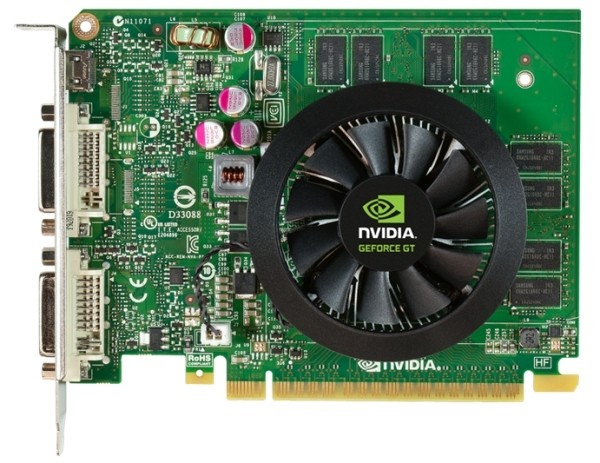Not all of the news that comes out of Computex has to do with high-end components as evident by Nvidia’s announcement of the Kepler-based GeForce GT 640 DDR3 graphics card. This GK107 part follows in the footsteps of the previously-announced OEM-only GT 640 but this will be a retail desktop component available for anyone to purchase.
The reference design GT 640 features a 28nm Kepler-based chip with a die size of 118mm². Cards will ship with a base GPU clock of 900 MHz, 384 CUDA Cores, an effective memory clock of 1800MHz, 2GB of DDR3 RAM and a 128-bit memory interface. The GT 640 has the same peak power draw of the GeForce GT 440 at 65W.

Zotac told The Tech Report that Nvidia is aiming for sub-$100 cards but as of writing, prices are about $10 higher than that mark. Furthermore we are told that the GT 640 is about 40 percent faster than the GT 440 on average with a 50 percent higher performance per watt rating.
It’s clear that these cards won’t be for the hardcore gamer but if you are a mainstream user that is looking for moderate gaming performance from your desktop or someone that wants to outfit a HTPC with a capable graphics card, this could be right up your alley. Cards from the likes of Evga, Gigabyte and Zotac are already starting to show up in stock at online retailers for around $110.
https://www.techspot.com/news/48887-nvidia-intros-mainstream-kepler-based-geforce-gt-640-gpu.html